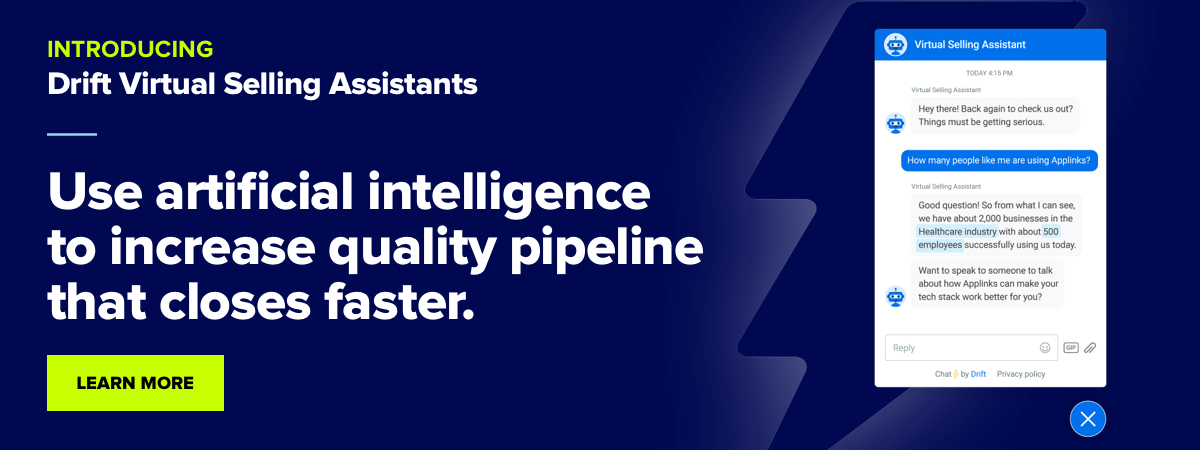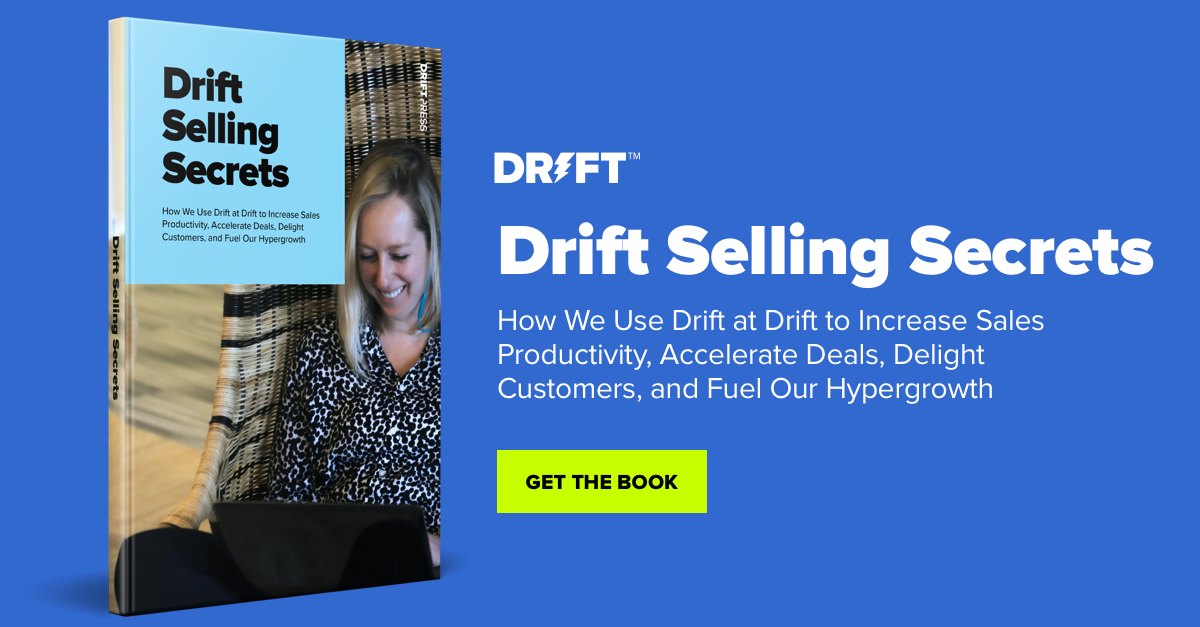Account-based selling is how B2B sales teams allocate resources towards top accounts, while still connecting with as many quality prospects as possible. You want a balance between giving top-tier accounts extra attention, while still putting enough muscle behind one-to-many campaigns as well.
To strike this balance, you need to measure every touchpoint, so you can figure out the ROI of both your high-touch and your low-touch programs, and decide what strategies are worth it – and for which accounts.
In our guide to account-based selling, we dive into exactly how we do this at Drift: how we craft our ideal customer profile (ICP), segment target accounts, organize AEs and SDRs, and measure results.
What Makes Account-Based Selling Different
Account-based selling is the method companies use to target companies – called accounts – instead of only individual prospects within their ideal customer profile. This method helps sales teams invest more resources into the deals they really want to close, instead of treating their entire addressable market in the same way.
We like to think of account-based selling as ‘one-to-one, one-to-a-few, and one-to-a-few-more.
Without account-based sales: SDRs use the same strategies for all prospects, regardless of the potential of the account.
With account-based sales: SDRs align their strategies with the account’s estimated potential.
Account-based sales coincides with account-based marketing (ABM) and is one important way that sales and marketing teams can work together to accelerate revenue.
First, the accounts are identified. Then, marketers will run ads and deliver content to these accounts, while sales professionals will prospect to them and invite them to exclusive experiences and events.
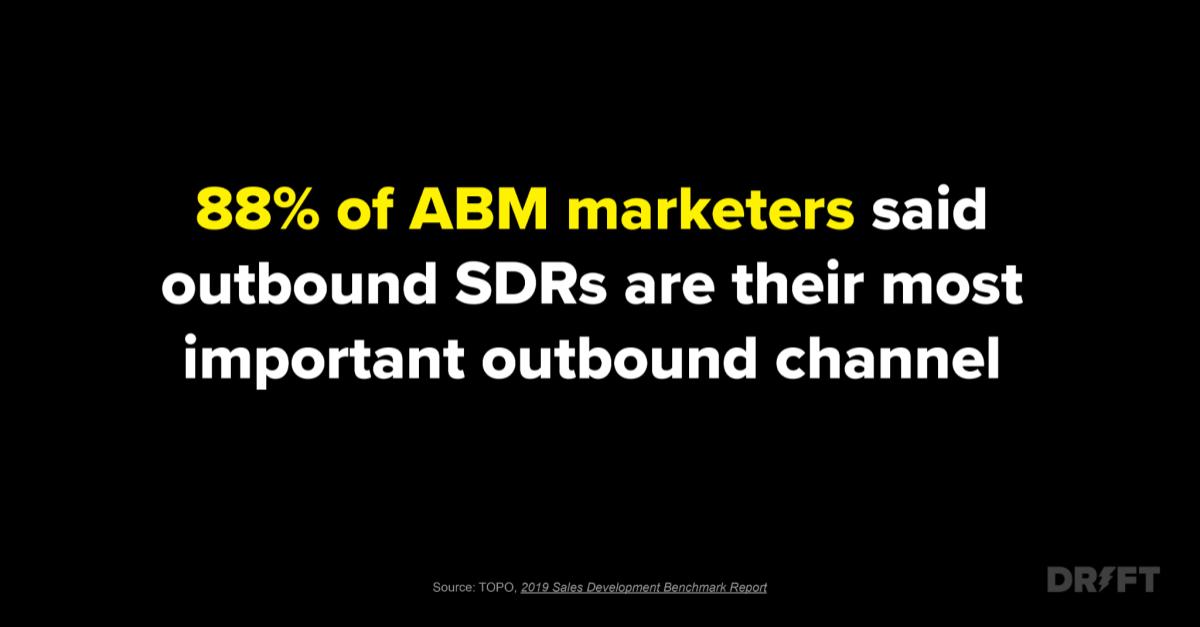
The need for great account-based selling depends a lot on your company’s price point.
If you sell to enterprises, you may need to adopt an account-based approach. ASPs for accounts can be wildly different. It makes sense to put more resources into acquiring a $500,000 a year customer than a $5,000 a year customer, doesn’t it?
However, if you don’t have massive variation in your annual contracts or have smaller ASPs, then account-based sales won’t require the same calculations. It won’t be an equation of ROI. Rather, you could use account-based selling to target the types of customers you want testimonials and case studies from so that your inbound marketing efforts are more effective.
The Account-Based Selling Framework
The account-based selling framework is simple. You split up your addressable marketing into three segments: your top tier strategic accounts, your target accounts, and your remaining addressable market.
We like to think of account-based selling as “one-to-one, one-to-a-few, and one-to-a-few-more.”
The Boston Consulting Group calls this account-based engagement, which is their way of describing that the way that sales reps engage with accounts should vary.
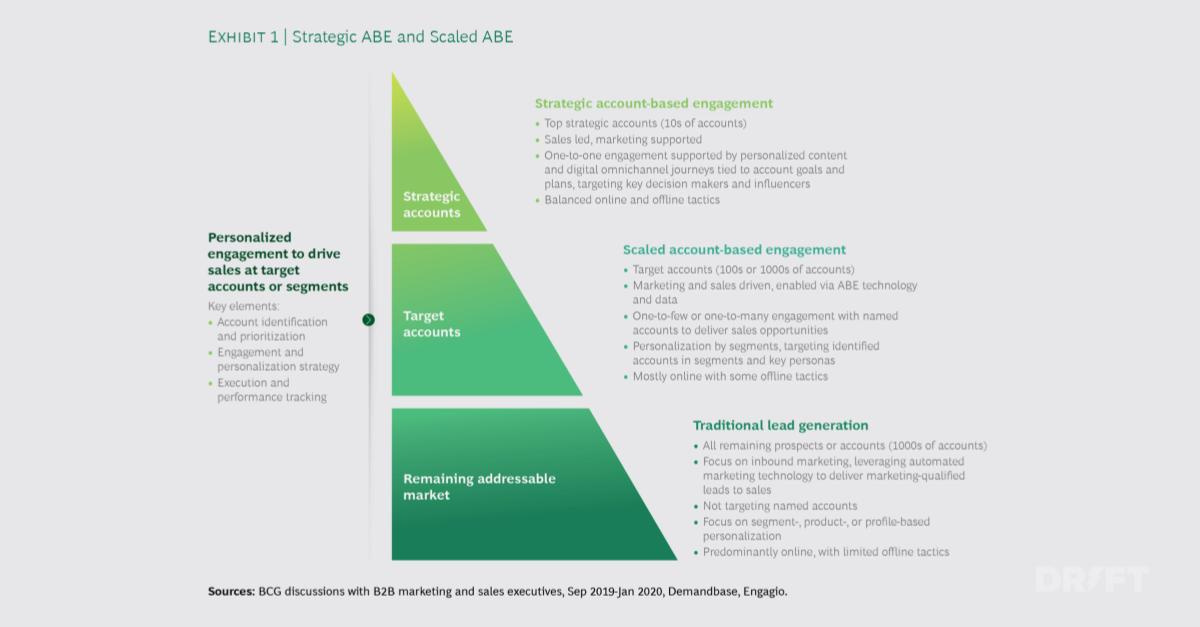
- Strategic accounts – In this section, you’ll have a few dozen accounts or a couple hundred, depending on the size of your sales department. At Drift, we keep about 250 strategic accounts. When we close one, we add one more. For these accounts, engagement is done on a one-to-one basis. Later, we’ll show you creative ways to create amazing experiences for your strategic accounts.
- Target accounts – Depending on the size of your company, you’ll have target accounts numbering somewhere in the thousands. These are the accounts that get a more standard treatment, like outbound prospecting emails (though still personalized) and calls. At Drift, we consider this our one-to-a-few group, because a lot of activities can be done in bulk and are supported by automation.
- Remaining addressable market – And then, we have our one-to-a-few-more group, which is any other company you’d like to have as a customer, but that you aren’t going to prospect to. Customers in this group are acquired by marketing activities alone, with no involvement from sales until someone enters the lead stage.
To sum things up: With your strategic accounts, your sales team will give them the white glove, star treatment. For your target accounts, your sales team will prospect to them in hyper-personalized ways that match their needs. And for the rest, your sales team will engage with them after marketing (or an AI chatbot) qualifies the lead.
How to Organize Account-Based Sales as a Team
Now that the strategy and framework behind account-based sales are clear, it’s time to organize this work. Because after all, it is work. Luckily, we love it.
Define Your ICP
The first step is to identify your ICP. You probably already have a great idea of the company headcounts, industries, and titles to go after.
But before investing in account-based selling initiatives, it’s important to review your ICP and make sure it’s accurate and fully informed with data. If you have data science resources, you can create propensity models based on firmographic, technographic, or other types of indicators that tell you that prospect is likely open to your value proposition. Even if you don’t have a data science resource, you can still create great scoring models to help select your best-fit prospects.
“Basing your ICP on market research and competitor research alone means you’re not actually paying attention to real activity. It doesn’t matter what companies you know you can help. You have to focus on who you can help and who’s the most ready to receive that help.”
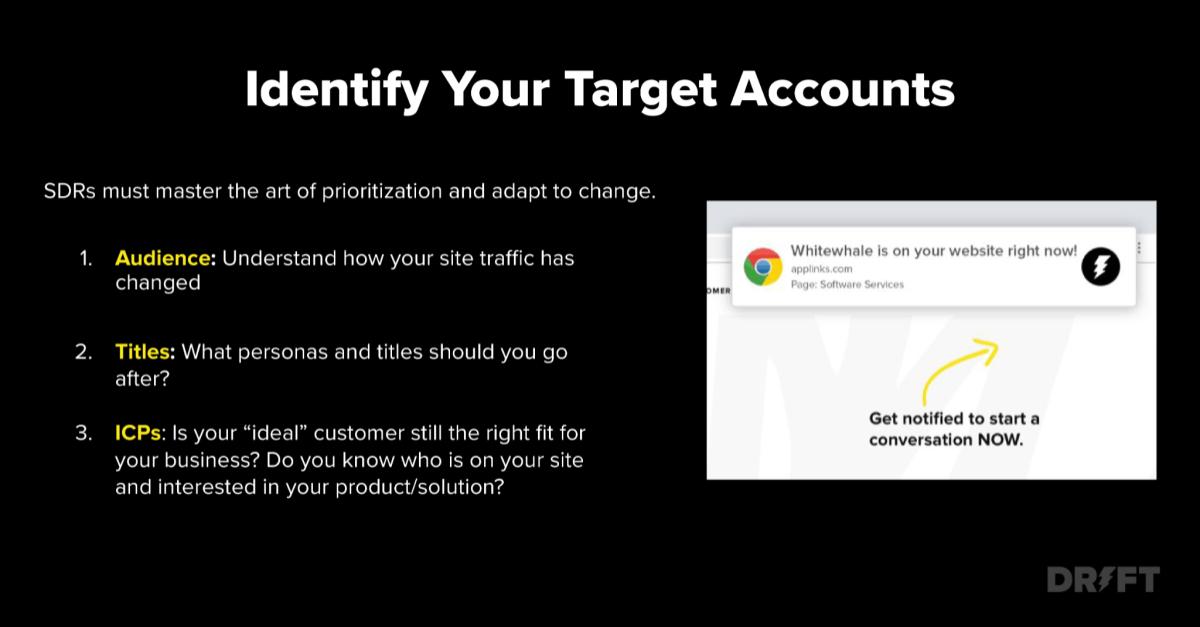
Take a look at your inbound leads and website traffic. You might find that your website activity can help you better define your ICP.
Segment Your Target Accounts
With a clear and well-documented ICP, the next step is to segment your target accounts into those three groups. There are the ones who will receive top-tier attention, the ones you will prospect to, and the ones that you won’t prospect to (but you hope your marketing attracts).
At Drift, we keep 250 strategic accounts. When we close one, we add one more.
As you close more of your strategic and target accounts, you can add more accounts to your lists. You should only put accounts that are clear matches to your ICP in your top tier. But for your middle tier, you could test out different variations of your ICP.
You might find more success with companies that employ a certain role, sell their businesses in a certain way, or have a certain number of offices. This can help you refine your ICP, so make sure you’ve got some room for flexibility and testing.
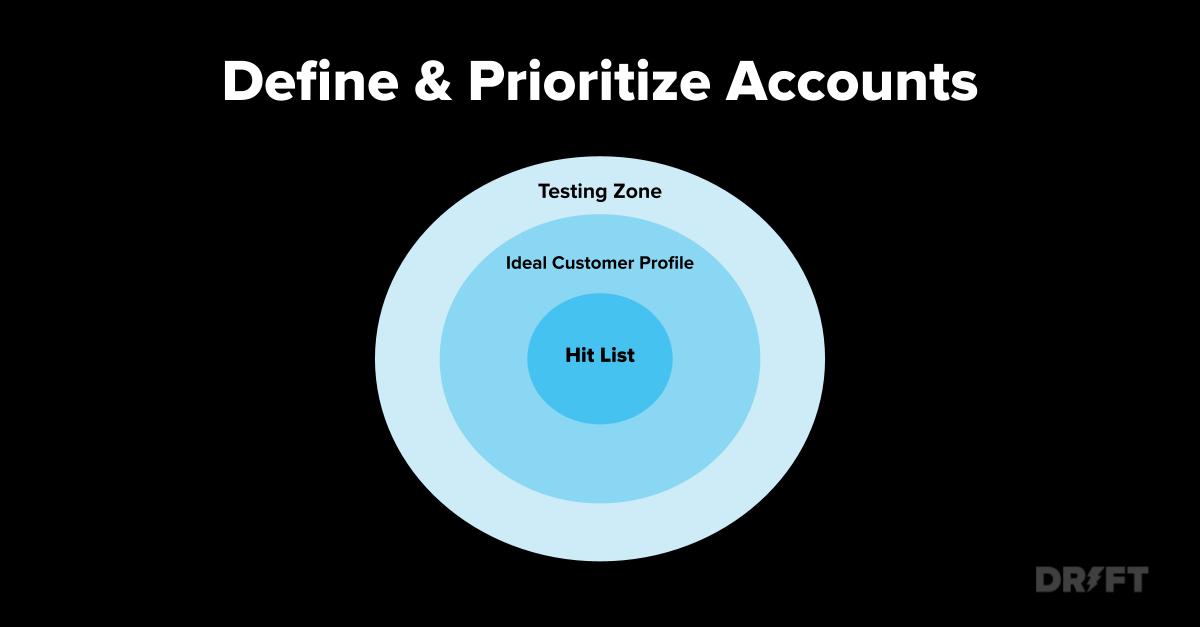
At Drift, we segment our accounts based on their size.
So, in our top tier, we have enterprises and large mid-sized businesses. In our middle-tier, we have mid-sized businesses, and our inbound marketing helps us acquire our small business customers.
Assign Your AEs and SDRs to Segments Based on Their Skills
AEs and SDRs have different skill sets, experiences, and styles – and that’s great news. We make sure that our AEs and SDRs are working in the right segments.
For example, an AE who has previously sold to enterprises should likely work the top-tier segment. Their experience getting in touch with executives from big-name brands is a big boon to closing top-tier accounts.
And our AEs and SDRs who enjoy working with fast-paced businesses will target our middle tier. They might have a deeper understanding of what new or bootstrap or scale-up businesses are interested in.

When you have the right sales reps in the right segments, not only will you better engage your team, but you’ll also get better results.
After all, customized pitches are key to sales success, and it’s hard to be great at customizing pitches if you’re always switching segments. It’s better to amass deep knowledge.
“I’m an Outbound Enterprise SDR, which means I run completely cold outbound campaigns into our enterprise accounts. I work with two enterprise account executives, and co-own their books of business. It’s a really great group we have! Together, we analyze and study our books of business, identify accounts that we want to break into, and develop strategic campaigns to drive conversations and generate pipeline.”
Allocate Budgets for Segments and Programs
How will you allocate your budget for these segments? How many team members will you assign? How much will you spend on swag and events?
Later, we’ll discuss metrics and ROI calculations to adjust the budget, but you do have to start somewhere.
An excellent grasp of the following will help you design your starting budget:
- The ASP of your solution by your segments
- The retention rate of your segments
- The solution-readiness of your segments
- The average sales cycle of your segments (versus your company’s need for faster revenue)
It’s also worth noting that you might be able to stretch your budget a little farther than you might have in the past. It’s a lot more affordable to run virtual events for 10 prospects at a time than to fly and visit 10 different target accounts.
Flying is still essential in some industries, but if your industry has rapidly adopted virtual meetings and events, then you should capitalize on this opportunity to get more out of your account-based selling budget.
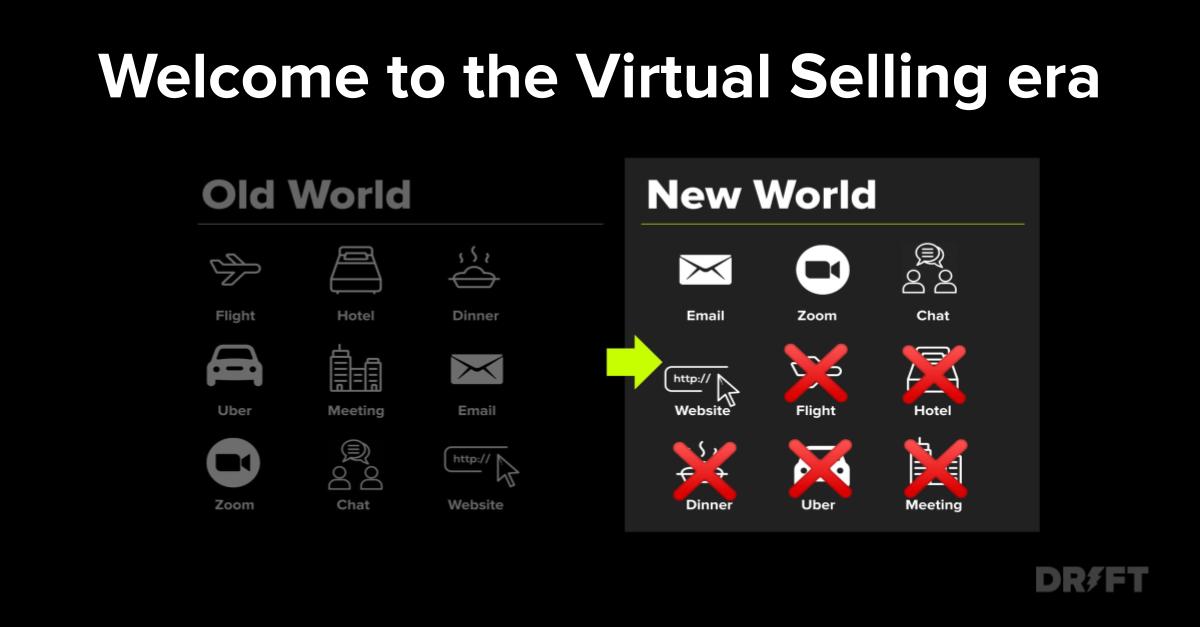
Create Amazing Experiences for Your Top Accounts (Wine Included)
Today, account-based sales look different than they did a few years ago. Because of the COVID-19 pandemic, there is drastically less in-person interaction. However, traditional industries (such as manufacturing equipment or services, for example), are still doing boots-on-the-ground sales.
While in-person sales will certainly tick up for all sorts of industries, it likely won’t meet pre-pandemic levels. Virtual ways of doing business are simply too convenient and affordable.
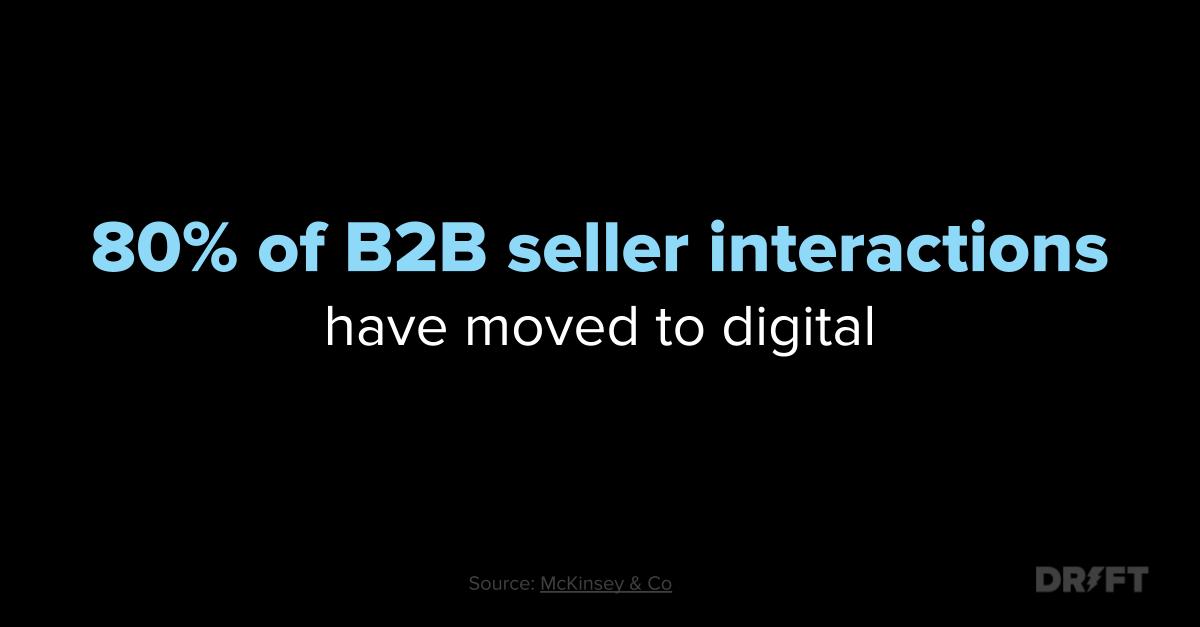
These are our two favorite virtual events to offer, and the ones that our prospects love best:
- Host a virtual wine tasting – We have a wine tasting company deliver wine to our top-tier accounts (after they’ve said yes to attending the event), and we enjoy the experience together.
- Invite executives from non-competing companies to a discussion – People want to be in the right rooms. You can curate the right groups of people by inviting people of similar roles (but from non-competitors) to an informal roundtable to learn from one another and get the inside scoop of what’s working.
Personalize Every Interaction, Regardless of Segment
Just because an account is in your middle tier, doesn’t mean you spray and pray. While we might not invite middle-tier accounts to small events, we still want to treat them like the amazing humans that they are.
Personalization is something we take to heart. We’re not talking about just first names and automated data. We take the time to research the company and craft unique messages that we use in emails and LinkedIn.
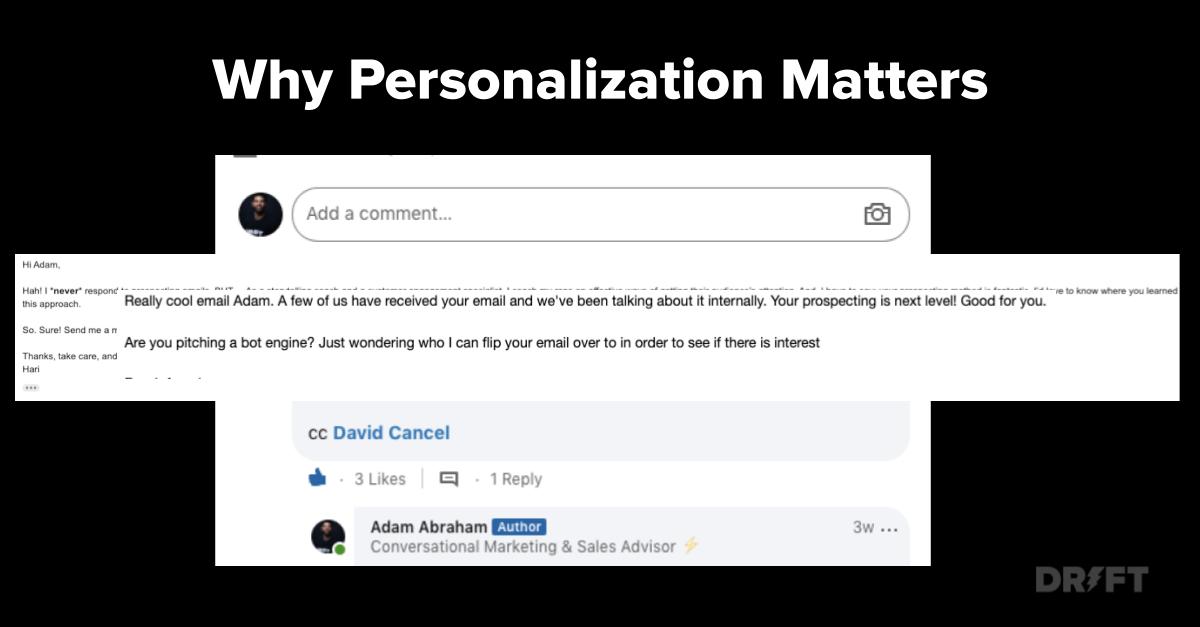
“Empathy has been my competitive advantage throughout my sales career. I always try to put myself in the shoes of my buyers when prospecting. Keep your messaging concise, original, and problem-centric. Outbound sales development can become repetitive so don’t forget to also have fun and stay creative!”
Partner with Marketing to Deliver Content
Personalized advertising is a huge part of account-based selling. You’ll want to work closely with the media buyers on the growth marketing team to accurately spend your budget on the exact people who are in your strategic accounts.

You can use custom Facebook audiences with target accounts or collect remarketing data by sending prospects in your top-tier accounts to specific landing pages from your email and LinkedIn conversations.
Measure Account-Based Sales Success
You’ll measure the success of your efforts for top-tier accounts the same way you would your prospecting. You’ll want to measure these and more:
- Connection rates
- Call conversation rates
- Show up rates
- Opportunity creation rates
What changes is that you would hope to see better rates with your top-tier accounts. You want higher conversion rates from outbound to call booking, and from call completion to opportunities.
That’s because you’re investing even more targeted effort into these accounts, and they’re getting shown your ABM ads on Facebook, LinkedIn, Google Display, and other channels.
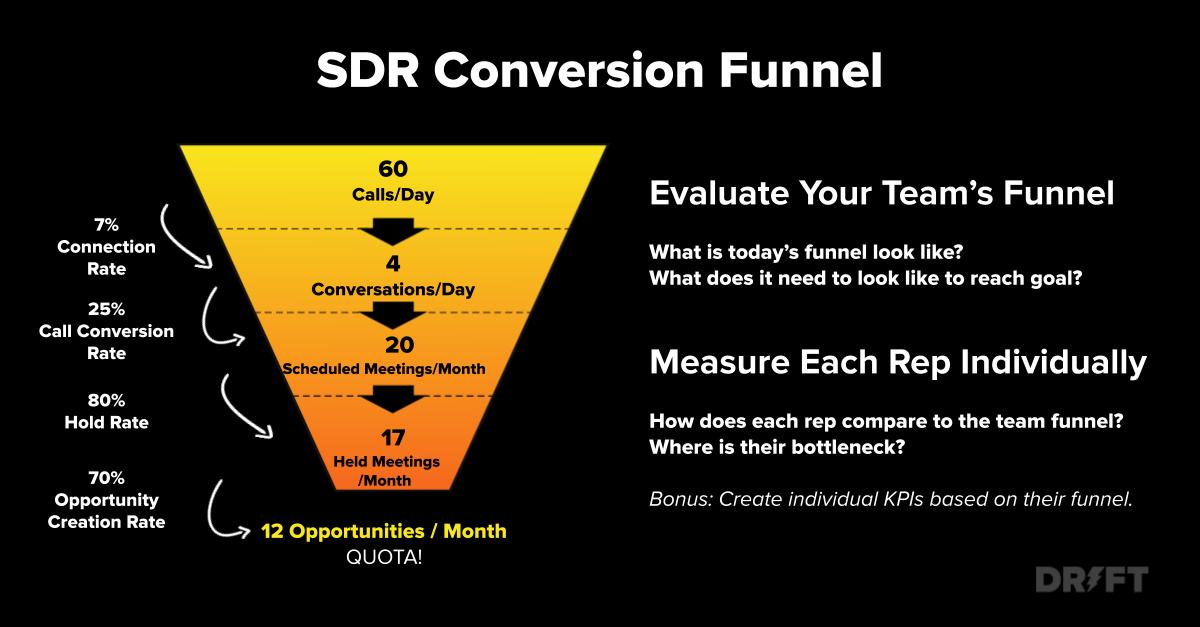
In addition, you’ll have different metrics too. For example, a cold email inviting someone to an exclusive event shouldn’t be measured alongside standard cold emails.
Set up reporting in an analytics suite like Klipfolio or Tableau. Create one dashboard for top-tier accounts and one for mid-tier. Then within each dashboard, integrate your data and allocate unique benchmarks.
Use ROI Insights to Cost-Effectively Scale Account-Based Selling
With data on every facet of your account-based selling, you’ll be able to discover which strategies are worth the cost and effort, and which aren’t.
You might find that you can afford to add a higher number of accounts to your top tier. Or, you might discover that you can get better results with your top-tier accounts with less costly methods.
The goal isn’t to keep your top-tier ultra-exclusive, but to give as many accounts the star treatment as it makes sense to.
Keep viewing your ASP data alongside all of the micro metrics that lead to closed deals to modify the strategies used in each tier, the size of your tiers, which accounts qualify to join a tier, and how much you spend on accounts in each tier.
The Best Tools for Account-Based Sales
To excel at account-based sales, you need technology that provides enrichment, insights, and sales structure.
These are some of our favorite account-based sales tools.
“I think of my email cadences as mini campaigns. For example, if there’s a CMO and CRO at a high-priority account, I’m going to carefully craft email cadences for them. And the easiest way for me to do that is with Drift Prospector. In Prospector, I can pull any filter from our CRM to create different attribute lists, and then develop messaging based on people that fit into that criteria. This method lets you develop really cool plays personalized to buyers.”
- Lead finding and enrichment tools – ZoomInfo, InsideView, and LinkedIn Sales Navigator are all great for finding the right leads and enriching the data.
- Email finding tools – Clearbit and Hunter are amazing for finding email addresses.
- Sales pipeline and CRM tools – Salesforce, Pipedrive, and Freshworks are great options for managing your pipeline and segmenting your target accounts.
- Sales call tools – Gong, SalesLoft, and VoiceOps can all be used to record calls, take automatic notes, and provide data-driven sales coaching.
“In past jobs, I spent so much time taking notes and focusing on what I was going to say that I forgot to listen to the other person and foster a real conversation. Tools like Gong are great for letting you relax into a sales call. When you don’t have to worry about obsessively taking notes or missing something, you can use all the great active listening and mirroring techniques to probe for more detail.”
- Experience and event management tools – Airmeet and Zoom’s breakout rooms features are great for running intimate events and allowing for even smaller breakout rooms. ON24 and Goldcast are better for larger virtual events. And while not a “tool,” this list of virtual wine tasting companies is sure to please.
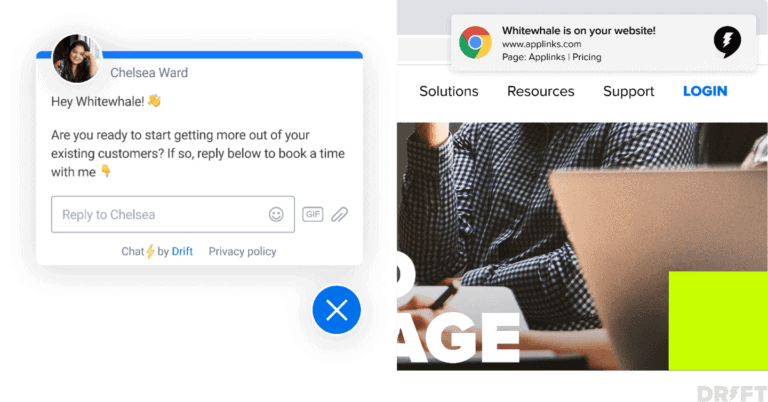
- Lead communication tools – When your target accounts are on your site, Drift will notify the right AE so they can hop in and start up a conversation.
“So much of sales without Drift is chasing and banging your head against the wall. Drift is a must-have platform because it helps you focus on high-value activities. For example, I love Drift ABM. I use it every day. You could be sending emails, doing normal day-to-day stuff, and you get notified that this account you’re working with is on the website. You click on the notification and have a conversation. It’s super impactful and helpful in speeding up deal cycles.”
Key Takeaways
The account-based sales method helps you put more energy into the accounts that give your company more revenue. To make sure your investment yields ROI, you need to measure those resources against the higher ASPs you get from these strategic accounts.
At the same time, you need to work to keep the costs of your star treatment down, so you can offer this experience to more accounts. As your company grows, your capacity at your top and mid-level tiers should grow too.





